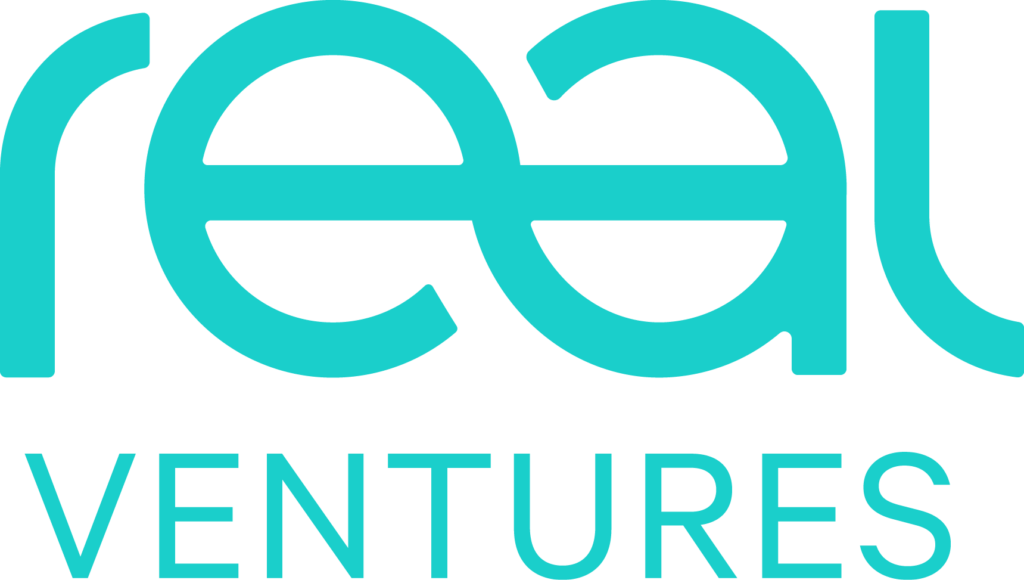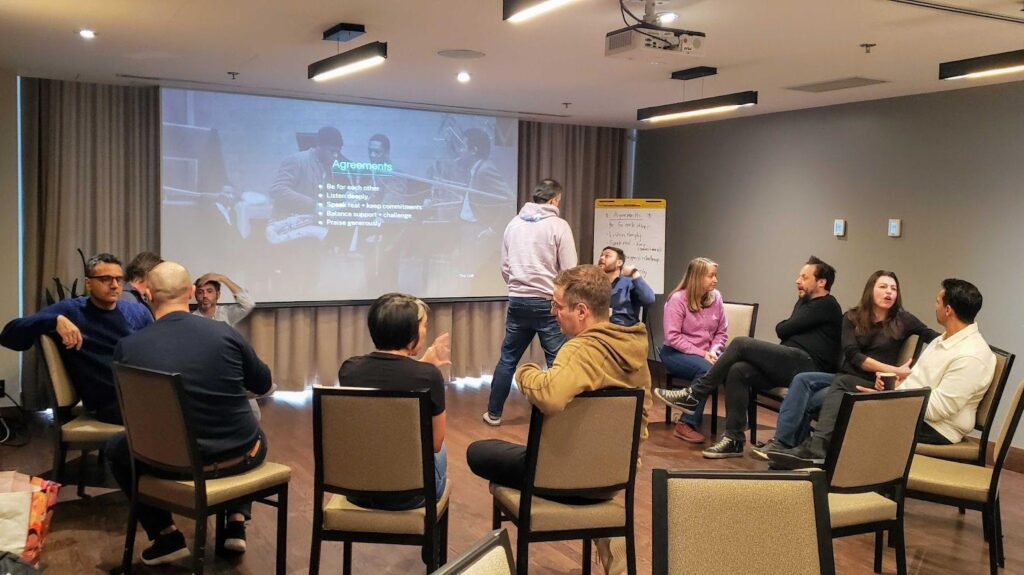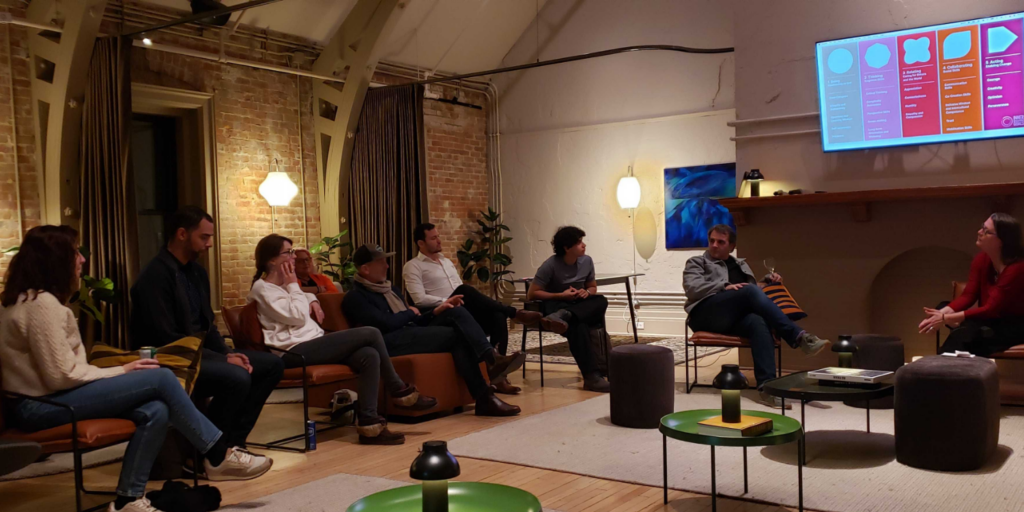It’s been a long cold lonely crypto winter, but here comes the sun: blockchain and Web3 represent an exciting future for the Internet and society’s relationship with technology. Our Partner Mark McDowell speaks with Director of Communications, Lauren Jane Heller, about where he sees the greatest impacts of crypto, why not everything belongs on Web3 and what hurdles lie in the way of massive crypto adoption.
So what are you and the other people who are deep in the blockchain and crypto community really getting excited about right now?
Big picture, the most exciting thing is the emergence of Web3. That’s what we crazies call the new Internet. It’s an Internet of decentralized apps that’s built on top of blockchains. It’s pretty exciting: we have a new Internet that is respectful of our privacy and anonymity. And it’s not going to be based on advertising.
I think we’re also beginning to understand that not every online experience belongs on Web3. For example, I don’t think e-commerce particularly belongs on Web3. Amazon works amazingly well and no one is clamouring for a decentralized version. I also don’t believe that e-commerce has an unhealthy reliance on advertising. Of course Amazon operates one of the largest ad networks in the world, but their ad business drives e-commerce, not simply “attention commerce.”
If we have Web3 emerging and we have certain aspects of the current Internet that would not make sense to have on Web3, how would we interact with it? Would it be on the same devices we currently use? How would this actually work?
I find this exciting because all of this still needs to be figured out. If you go to a Web3 website, you can’t do anything if you don’t have a crypto wallet like MetaMask, which is a Chrome extension. If you have MetaMask, then you can make some tiny payments to power your dapps. Decentralized apps need a little bit of cryptocurrency in order to run — cryptocurrency is like the gasoline. So, instead of advertising, you’re paying a little tiny sliver of cryptocurrency to do what you want to do.
I think the next couple years is going to be spent figuring out which Internet services belong in Web3 and which ones don’t. Ideally, the user experience of Web3 won’t be noticeably different than the user experience of Web 2.0. I think that we’ll continue to experience the Internet through computers and mobile phones. You’ll still go to web pages and you’ll still run apps. Almost everything we do on a computer or an app runs in the Cloud. What we see in our device is really just what gets displayed for us. The difference with Web3 is that back-end processing is going to be decentralized on computer nodes all over the world, whereas in Web 2.0 cases it will be centralized.
There’s just so much pent up desire for a new Internet that respects users’ privacy and has a native currency.
What kind of apps are most likely to be on Web 3?
It’s hard to know because right now people are so excited about Web3 that they want to do everything on Web3. They want decentralized versions of Google, Facebook, Amazon, Uber, Spotify and Tinder. Over the next few years, we’ve got to figure out which ones really need to be decentralized.
Web3 is good for low trust situations. If you’re buying something in cash you don’t have to trust the other person. Cash is cash. We need something like that on the Internet. We need decentralized money. I think decentralized finance — DeFi — is going to be a huge category for Web3. We’ll see currency and financial products — derivatives, options, banks, interest-earning platforms and lending platforms all based on cryptocurrency.
We’ll see a lot of gaming on Web3, especially gambling and other games where you don’t want to trust the house. We’re also starting to see prediction markets on Web3. These are dapps where users can wager on anything: political outcomes, sporting events, the weather, whatever they want. Users create wagers and the odds are computed continuously as users place their bets. The blockchains pay out all the wagered funds to the winning side.
These prediction markets could be really powerful. It’s more than just wagering — it’s a way to predict the future. If you’ve got millions of people wagering on certain events, then you’re harnessing the wisdom of crowds.
So for a prediction market or for some of these dapps, what would the business model for the companies be? How would they be monetized? Are all of the users going to be doing micropayments like you suggested for YouTube (see Blockchain 101 below), or are there a bunch of different business models that are being envisioned right now for these decentralized apps?
What if I told you there is no company?
Well if there’s no company, what’s the incentive for people to build it? And then how is it maintained? I understand that it’s going to be decentralized, but how does that really work?
One of the big ideas of Web3 is a new type of entity called a DAO — a Decentralized Autonomous Organization. Instead of a company, there is software code on the blockchain that defines everything the entity is allowed to do. Let’s say we wanted a global prediction market. It needs to be administered by some entity. Well, that could be a DAO that implements all the rules to run the prediction market. As users, we would send some of our cryptocurrency into the DAO — into the code — and lock it up. The DAO will have some rules: maybe the DAO get to keep 0.1 percent of the money that’s wagered, and then distribute it back to the original supporters until they get their money back. But there is no corporation — we don’t need to trust anybody. In fact Nick Tomaino who runs 1confirmation, a crypto-focused venture fund that we back, wrote an interesting blog post called The Slow Death of the Firm and it’s all about how corporations may go away and just be replaced by DAOs.
So the person who is initially writing that code to create the DAO is doing this in an altruistic fashion just because they believe in the project?
Well, sort of. The world of Web3 has a great culture right now because it is highly mission driven. We have extremely talented developers who are excited to be on the brink of a new Internet and who are volunteering their time to develop these DAOs. They’re developing these projects out of love for the technology, and out of a belief that there’s a better Internet. Personally, I find that awesome. It’s a little bit like the open source movement. And there might very well be a way for these people to be paid. The code that implements the DAO might have a provision for a small payment to the developers and supporters.
The world of Web3 has a great culture right now because it’s highly mission driven. We have extremely talented developers who are excited to be on the brink of a new Internet and who are volunteering their time to develop these DAOs.
Roughly how many people currently are doing this kind of work and volunteering their time and writing code and creating these decentralized apps?
It’s really hard to answer because of the nature of decentralization. It’s really kind of anonymous — by definition not organized. But I’ve heard estimates that Ethereum has a developer community of about 250,000. I would say that’s probably a good number for the global community of contributors.
We’ve been talking mostly about what’s really exciting, but what do you think are the things that are going to get in the way of Web3 in decentralizing the Internet?
Number one on the list and probably number one, two and three is regulation. It’s not clear in the US whether it falls under the SEC, The Securities and Exchanges Commission, or under the CFTC which is the Commodities Futures Trading Commission. Are cryptocurrencies commodities or are they securities? Bitcoin and Ethereum have been labelled commodities but it’s ambiguous for the other two thousand cryptocurrencies. And even if we did know whether they were securities or commodities, neither organization — The CFTC nor the SEC — has written any rules about crypto.
The SEC relies on the Securities Act of 1933, which was passed in the aftermath of the Great Depression almost 100 years ago. So far, the SEC has said that’s all the rules we need. Um, are you serious? You don’t think cryptocurrency on the Internet might be worthy of a fresh look? Are utility token that fuel online computing the same as stock certificates? What are the tax implications of converting Bitcoin into a stablecoin during periods of volatility? How do we treat and tax assets that magically appear through hard forks or airdrops? The list of questions goes on. The SEC won’t put out new rules to clarify matters, but they have become increasingly aggressive about suing companies which they believe are in violation of the 1933 Act. They just announced a lawsuit against Kik last week. Unfortunately, the SEC is regulating through enforcement rather than through new rules, and as a result they’re paralyzing innovation in the US in this crucial new frontier of the Internet.
So most likely Web3 is probably not going to be happening in the next six months or even a year? Or maybe two? Or maybe five?
Web3 is already beginning to emerge. There are conferences all around the world where developers meet to discuss their projects. When we finally get regulatory clarity, I believe there will be a Cambrian explosion of Web3 companies. There’s just so much pent up desire for a new Internet that respects users’ privacy and has a native currency.
Blockchain 101
For those who aren’t super familiar with the space, I’d like to get back to the basics. Why are Bitcoin, crypto and the blockchain so exciting? And why do you believe this is something that is going to change the world as we know it?
Fundamentally, the blockchain is a new paradigm for computing. It’s a whole new way of looking at how applications work and the business models behind them. What makes it different is that blockchain-based projects are not necessarily controlled by a company or a government. They’re fully decentralized.
Why is that important? Well, I think we’re all a little sceptical about where the Internet has gotten us today. There are a few companies — Google, Facebook, Amazon — controlling massive amounts of information about people. They’re highly centralized. They know a lot about us and they use the data to drive advertising. I find it a little bit depressing that the ultimate business model for the Internet is advertising — I had higher hopes.
A small digression: I read this science fiction book when I was in high school called The Red Dwarf: Infinity Welcomes Careful Drivers by Doug Naylor and Rob Grant. It’s a story about the crew of a spaceship that had left Earth a thousand years earlier with a top secret mission. The crew had been in space for so long that they had reproduced over dozens of generations so their offspring could carry the mission forward. The book opens when the spaceship is finally about to execute its mission — to launch a nuclear missile into the heart of a star. When they launch the missile, the star erupts in a gigantic explosion and the crew promptly turns their ship around to begin their long journey back to earth. But of course, the crew are like “Hey, why did we have that mission in the first place? What was the whole point of all those years on a spaceship?” They had no idea. But on Earth that night, at that exact moment, if someone looked up into the night sky, they would have seen hundreds of other stars exploding. And they spelled out a message. They spelled out “COKE ADDS LIFE”.
It’s funny but I see this as a parable for the Internet. We have this incredible technology that changed the whole world. And all we’ve gotten from it is a bunch of ads that we don’t want. “COKE ADDS LIFE.” So what I like about blockchain is that it is decentralized and not dependent on ad revenue. Our data won’t be warehoused inside large organizations that are going to weaponize it against us.
Once you’ve taken that off the table, then you open up other business models, such as micro payments and utility tokens. What if YouTube had no advertising? What if you just paid one-hundredth of a cent for every video you watched? In the course of a year it might cost you ten bucks. But all those content producers would collect money. If somebody had a hundred million views, they’d be making a lot of money. You wouldn’t need advertising.
So, fundamentally, blockchain represents a new architecture for computing. It holds the promise of new business models and new apps that are not controlled by companies or governments. If you believe this, then you probably want to invest in some of those new applications. But you also want to invest in the underlying infrastructure as well — all the pipes and plumbing. See, it’s not about Bitcoin per se. Bitcoin being the first decentralized app — a digital token that could be exchanged or saved — introduced the much bigger idea of how the blockchain can serve us.
So what are the other ways the blockchain can be used that are so paradigm-shifting?
There are three emerging uses of the blockchain.
First is store of value. Bitcoin could replace gold as a globally-accepted place to store value. I find it kind of anachronistic to buy gold — it’s impractical to handle, transfer, redeem, or move across boundaries. Bitcoin is purely digital, can be moved around the globe in minutes at very low cost, and is increasingly known and respected as an alternate store of value. And Bitcoin is not the only store of value. We are seeing projects where real estate, artwork and other collectibles are “tokenized” so that investors can purchase arbitrarily small fractional stakes in these assets. It might be possible, for example, to invest $100 in real estate on a particular city block in Toronto. We are also seeing unique digital assets — think cryptokitties — that reside on the blockchain. These are called non-fungible tokens because unlike Bitcoin or Ethereum, each token is unique and not interchangebable. Sound weird? It’s really no different from collecting baseball cards or comic books.
A second use case is to have a new unit of exchange, a new form of money that people can spend. People don’t want to spend Bitcoin because it’s so volatile, but there are stablecoins that are emerging. I’m happy to spend a stablecoin because if its is worth a dollar today it’s gonna be worth a dollar tomorrow and a dollar next year. And stablecoins are a form of cryptocurrency — they’re not any more stable than, say, the US dollar, but they might be as stable as the US dollar and that’s certainly good enough for a unit of exchange. All of a sudden you’ve got a global currency that’s not controlled by a government, not controlled by a company and it works on the Internet as a native digital currency.
The third use case for the blockchain is that it can be an operating system for apps. We call them dapps with a “d” because they’re decentralized apps. These are applications that don’t run on centralized servers: they run on independent nodes all over the world.
Are there are a lot of businesses that exist today that could easily become decentralized or do you think it’s really a massive paradigm change for people or companies to think differently?
I think we’re facing a massive paradigm change. I believe a whole new generation of projects and companies are going to emerge with a vast array of dapps that are unique and wonderful because, by design, they will safeguard our privacy and cannot be tampered with.
I also believe that existing enterprises will adapt and use blockchain because they value its reliability and immutability. Major corporations like Walmart and Target are exploring the use of blockchain for supply chain management and invoicing. In the supply chain, for example, many suppliers can contribute by logging information into a distributed ledger that becomes a permanent, auditable record.
We will undoubtedly see companies introducing crytpocurrencies directly to consumers as well. Facebook revealed last week that it’s going to have its own cryptocurrency to allow users around the world to buy and sell things from other users.
Many people are wary of are the energy cost of mining Bitcoin and other tokens, and the fact that you can’t do as many transactions as you can with say Visa or MasterCard. What are people doing right now to solve those problems?
Today, Bitcoin and Ethereum both rely on mining in order to validate transactions. And mining does involve a lot of wasted computing resources because these miners compete to solve “make work” math puzzles. That’s called proof of work because each miner must perform computations and consume power in order to ensure the integrity of the network. This level of effort is what underwrites the security. The trouble is that this underwriting leads to a lot of wasted energy.
Ethereum is moving away from proof of work to a new approach called proof of stake. Bitcoin will never move to proof of stake because it has very limited governance (by design) and even simple protocol changes are painstakingly slow. Bitcoin is going to continue to be an energy hog, but many people will argue that’s what gives it its value. And by the way, Bitcoin has never been hacked. Ever. The security comes from the fact that you have all these competing miners doing hard work, and that’s what’s made it secure.
Ethereum and most of the other new blockchains, however, are moving to proof of stake, whereby parties that already hold some of the cryptocurrency lock up a portion of their holdings and vouch for the validity of new transactions. If they falsely validate a new transaction, they lose what they’ve staked. It’s kind of like a performance bond. When the city of Montreal hires a contracting firm to build a new road, the firm must post a performance bond and if they don’t deliver on time they lose their money. Proof of stake does not involve puzzle solving competitions, and that makes it vastly more energy efficient.
Another nice thing about proof of stake is that people who lock up their cryptocurrency and act as stakers actually earn interest. There’s no way to earn interest directly in Bitcoin. Proof of stake seems like a more enlightened way to reach consensus on the blockchain.
But there’s still another problem which is the speed of blockchain. Bitcoin can process something like four to seven transactions per second, and Ethereum about 15 transactions per second. But that’s nothing compared to the Visa network. The Visa network, I think, can handle 1,700 transactions per second. Bitcoin and Ethereum have nowhere near that level of scalability, but there’s a lot of work being done on Ethereum (and elsewhere) to address this.
***********
Like what you’re reading and want more? Sign up for our newsletter and follow us on Twitter, LinkedIn and Facebook.




